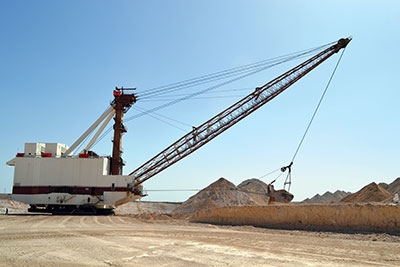
Features
Agronomy
Tillage
The facts about phosphate rock
Most of the phosphate rock that is mined from the earth goes towards making fertilizer for crop production. Every cell in plants and animals requires phosphorus (P) to sustain itself and there is no substitute for it in nature.
During the past five years, several well-publicized reports have suggested the world phosphate rock supply is rapidly dwindling. In response, there has been widespread concern about whether or not we are reaching our “peak” supply of phosphate rock, and if fertilizer shortages are on the horizon.
Recently updated estimates report that the Earth has at least 300 years of known phosphate rock reserves (recoverable using current technology) and 1400 years of phosphate rock resources (phosphate rock that may be recovered at some time in the future). These numbers fluctuate somewhat since companies do not intensively explore resources that will be mined far into the future.
Phosphate fertilizer can be a significant cost for crop production and an important mineral for animals. However from a global perspective, phosphate is considered as a low-price commodity. One recent publication estimated that each person consumes an equivalent of 67 lb phosphate rock each year. This results in an annual consumption of about 9 lb P per person (or 0.4 oz. daily consumption), which is equivalent to 1.7 cents per day.
Phosphorus atoms do not disappear in a chemical sense, but they can be diluted in soil or water to the point where it is not economical to recover. Annual P losses to the sea by erosion and river discharge roughly balance the quantity of P that is mined. This shows that there is substantial room for improvement in efficiency. Implementing appropriate recovery and recycling of P from animal manure, crop residue, food waste, and human excreta would make a major step in this direction.
Efforts to improve P efficiency and build soil P concentrations to appropriate levels, serve to enhance its use. In developed countries with a history of adequate P fertilization, the need for high application rates diminishes over time. This contrasts with the situation in many developing countries where low soil P concentrations still require significant fertilizer inputs to overcome crop deficiencies.
Members of the public are encouraged to engage in debate over important issues, but there is a danger that oversimplification leads to incorrect conclusions. The case of looming P scarcity is an example where insufficient information led to a wrong conclusion. Somehow the incorrect notion still persists that there is an impending shortage of P and that limited fertilizer availability will soon lead to global food insecurity.
There may be a scarcity of many earth minerals some day, but the P supply will not be a concern for hundreds of years. However responsible stewardship of rock phosphate resources still requires a close examination of improving efficiency throughout the entire process, including mining, fertilizing crops, and implementing strategic waste recovery. Working together to improve P management will allow us to conserve this precious resource for future generations.
Dr. Robert Mikkelsen is Western North America Director, International Plant Nutrition Institute (IPNI). Reprinted with permission from IPNI Plant Nutrition Today, Fall 2013, No. 3.
November 25, 2013 By Dr. Robert Mikkelsen
 Morocco holds some of the largest phosphate rock reserves in the world. Most of the phosphate rock that is mined from the earth goes towards making fertilizer for crop production.
Morocco holds some of the largest phosphate rock reserves in the world. Most of the phosphate rock that is mined from the earth goes towards making fertilizer for crop production.